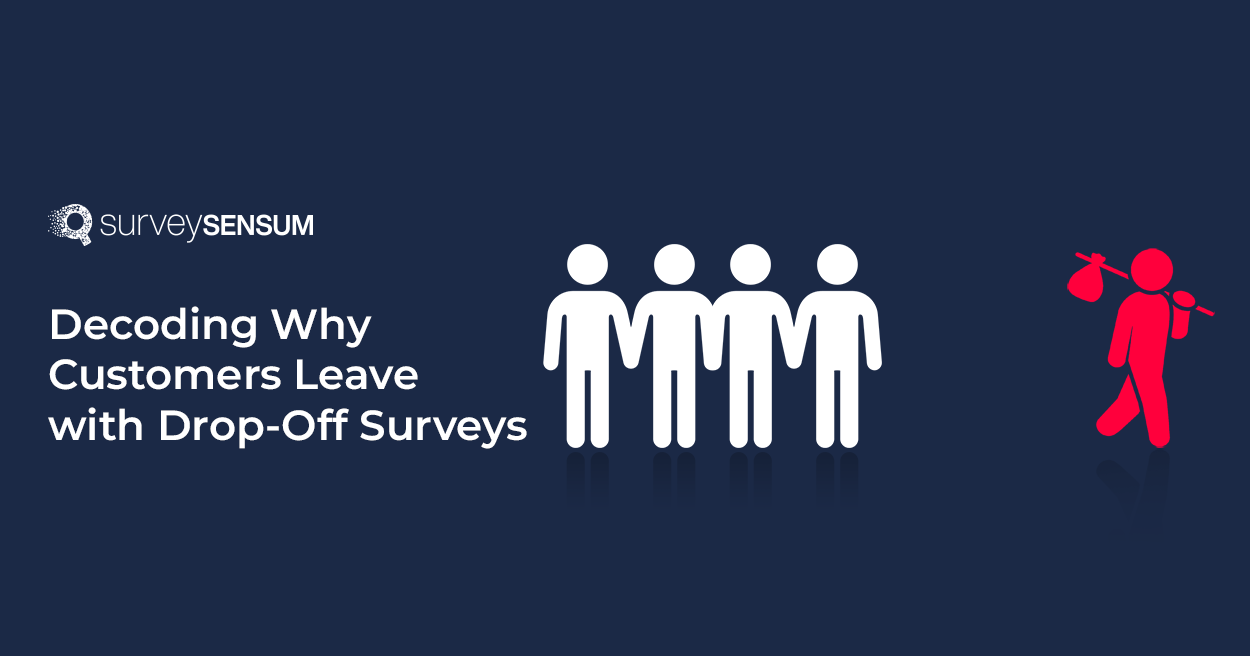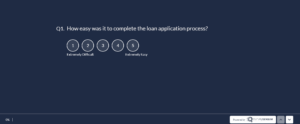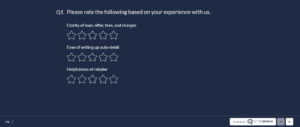
Why Customers Leave: Top Reasons & Fixes

Often companies inadvertently limit their understanding of customer satisfaction by focusing solely on measuring existing customer interactions through metrics like NPS and CSAT. This provides an incomplete picture of overall customer satisfaction.
Understanding why potential leads choose not to convert is essential for addressing the root causes of why customers leave. This blind spot poses a significant challenge, especially when marketing efforts are invested in acquiring leads that ultimately go unconvinced due to internal processes.
I’ve found that there are two key challenges in this regard:
Challenge 1: Neglecting the Lost Customers
A major challenge for businesses is concentrating too much on current customers and neglecting the significant impact of leads that don’t become customers. This oversight leads to missed opportunities and resources, making it hard for the sales team to turn acquired leads into loyal customers.
Challenge 2: The CX-Departmental Divide
CX professionals face the uphill task of persuading diverse department leaders to act on customer feedback. The challenge lies not only in convincing these leaders but also in demonstrating the tangible impact of improvements on critical metrics such as churn, revenue, retention, and referrals.
I have spent a lot of time working with Customer Experience folks who measure NPS, CSAT, or other surveys to understand their customers. 64% of these companies’ biggest challenge is to convince different department leaders to work on improvements or suggestions asked by customers.
And the biggest reason for this?
They simply can’t show the impact of working on feedback on numbers like churn/revenue/retention/referrals, etc.
Solution: Extending Survey Efforts with Drop-Off Surveys
The key to breaking free from these challenges is to broaden the scope of survey efforts. It’s time to shift the focus from merely measuring successful interactions, with a customer feedback tool, to understanding and improving the entire customer journey.
“So now it is time to go beyond what you have been doing and work on interactions where the company loses revenue as well, for example when you lose a customer or when you lose a lead/prospect.”
Drop-Off Surveys: Your Partners Against Customer Churn
Drop-off surveys are a valuable tool for understanding and addressing customer churn. These surveys play a crucial role in gaining insights into why customers leave. It provides businesses with the information needed to improve retention strategies and mitigate revenue loss. Here’s how drop-off surveys can be effective partners against customer churn.
Benefits of Drop-Off Surveys
- Identifying reasons for customer departure: Drop-off surveys provide valuable insights into the specific reasons customers choose to leave. The reasons can be dissatisfaction with product, service, or customer support.
- Understanding pain points in the customer journey: Drop-off surveys map out the entire customer journey and identify pain points that lead to customer churn.
- Plugging revenue leaks by addressing specific concerns: You can address these issues directly by collecting feedback on specific concerns or issues through drop-off surveys.
- Boosting customer retention through targeted improvements: Instead of applying generic solutions, you can address the unique challenges identified in the survey responses, making your retention efforts more effective.
Launch Drop-off Surveys With SurveySensum
Now, you understand the need to go beyond what you have been doing with drop-off surveys to understand why customers leave and retain them.
But how exactly are you supposed to do that?
So, let me explain the process, benefits, and amazing results of drop-off surveys with a case study of an NBFC I recently worked with.
Use-Case Inside: Non-Banking Financial Company
The Challenge
A prominent NBFC company was on a mission to improve its retention rate and lower its customer churn rate
So, what did they do?
They collaborated with SurveySensum to understand why their customers are leaving in order to retain them.
They were measuring only the successful interactions, like when someone completes the onboarding journey and receives the loan (disbursement), they will ask how easy it was to get a loan. And some attributes of that journey.


They received a lot of good insights on how the process can be improved but have no answer on what is there in the process that is making prospects drop off and not take the loan.
Getting that answer could have helped them prioritize the changes and convince other teams that we were losing this much revenue if we didn’t fix that.
The Solution – Step-By-Step Process
They were already sending surveys but only at certain touchpoints and this feedback did not help understand what was wrong in the process which resulted in customers dropping off. So, in order to understand this customer behavior better, they changed their survey strategy. Here’s what they did.
1. Drop-off Surveys
They started designing and launching drop-off surveys to measure the feedback from people who have dropped off and understand the reason for losing revenue.
The focus here was not on NPS/CSAT but more on why are we losing these people.
The survey had a couple of questions like:
Q1: You started your loan application with Home Credit but did not move forward with it, can we know the reasons?
Q2: Is there anything in the process you feel we should improve on?
Q3: Did you take a loan from any other company during the same time? If yes, could you name the brand
And the feedback received from customers was highly insightful.
2. Text Analytics Software
With the help of the Text Analytics Software, the feedback was properly segmented and analyzed for detailed understanding.
There were a lot of problems related to KYC and document-related issues – customers were not receiving the loan amount they requested and they encountered technical issues with their application.
Not just that, they also received information on which of their competition is converting them by locations/regions.
The Result
One by one, the team started working on these issues, and within 6 months, the conversion rate from applying for a loan to getting a loan increased by 5.6%, which in numbers is in millions!
Now, these drop-off surveys are installed for each of the 8 products they have and are bringing fantastic results.
Conclusion
This use case highlights the transformative power of customer feedback, specifically gathered through drop-off surveys, in driving strategic improvements, fostering customer loyalty, and ultimately achieving significant business growth.














